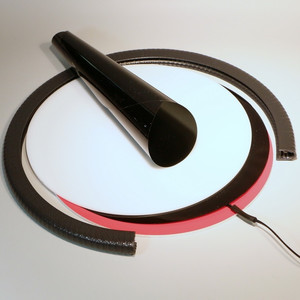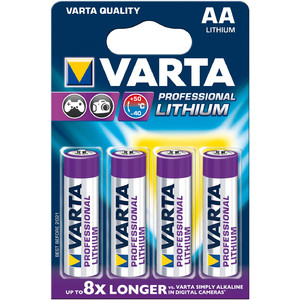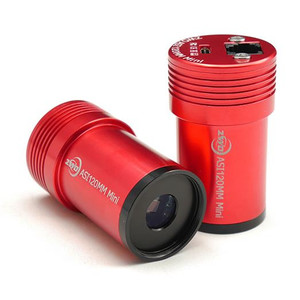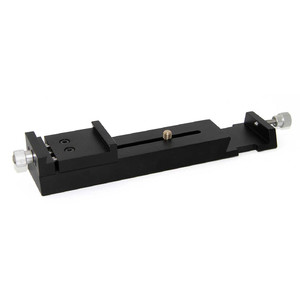Chi si occupa di astrofotografia prima o poi si imbatte inevitabilmente nel termine " Flatfield". Quando si scatta una foto con il telescopio, si verificano errori nell'immagine causati dalla diversa intensità dell'iluminazione del sensore. Affinché il software di elaborazione delle immagini possa correggere questo errore, sono necessarie immagini di una superficie uniformemente illuminata, scattate nelle stesse condizioni delle immagini effettive. Una superficie di questo tipo viene creata dalla pellicola luminosa Aurora Flatfield.
I vantaggi delle pellicole luminose Aurora Flatfield:
- Illuminazione completamente uniforme dell'apertura dell'obiettivo
- Spettro completo, quindi utilizzabile anche in combinazione con filtri lineari
- Alimentazione disponibile a 12 V o tensione di rete
Le pellicole Aurora Flatfield vengono fornite già montate in un telaio di plastica: il telaio è realizzato in plastica infrangibile, ha angoli arrotondati ed è dotato di una protezione per i bordi: la vostra pellicola Aurora è così perfettamente protetta durante il trasporto al luogo di osservazione e la piastra frontale opaca garantisce una distribuzione ancora più uniforme della luminosità.
Il diametro delle pellicole è stato scelto in modo da coprire bene le dimensioni tipiche degli strumenti:
- diametro 100 mm per strumenti con apertura fino a 4"
- diametro 160 mm per strumenti con apertura fino a 6"
- diametro 220 mm per strumenti con apertura fino a 8"
- diametro 315 mm per strumenti con apertura fino a 12"
- Diametro 420 mm per strumenti con apertura fino a 16"
- Diametro 590 mm
- Diametro 750 mm
Selezione della dimensione corretta:
- Per ottenere dati flatfield di alta qualità, l'apertura libera del vostro strumento deve essere completamente coperta. Il diametro del tappo anticondensa o simili non è determinante. Ad esempio: per un rifrattore da 6" (15 cm) è sufficiente l'Aurora da 160 mm, indipendentemente dal diametro del tappo anticondensa.
- Se si utilizza un Newton, RC, ODK o simili, la pellicola luminosa Aurora deve essere più grande del diametro libero dell'ottica. Come regola generale per un Newton vale: diametro libero dello specchio + diagonale del sensore della fotocamera. Anche in questo caso un esempio: per un Newton da 8" è sufficiente un Aurora da 220 se si utilizza una fotocamera con un chip molto piccolo (diagonale < 14 mm). Se si utilizza una tipica DSLR con sensore APS-C, è necessario scegliere un Aurora da 315 mm.
È possibile utilizzare senza problemi un Aurora grande per strumenti più piccoli: se, ad esempio, si possiede un Aurora da 315 mm, è possibile utilizzarlo senza alcuna limitazione anche per un rifrattore da 4" o per gli obiettivi della fotocamera.
La luminosità delle pellicole è ideale per le riprese con filtri, ma deve essere ridotta per le riprese in luce bianca o solo con un filtro L. La luminosità delle pellicole luminose Aurora Flatfield può essere regolata entro certi limiti riducendo la tensione di ingresso (solo con l'uso di inverter da 12 V). Inoltre, la luminosità può essere regolata in modo semplice ed economico inserendo uno o due fogli di carta bianca nel telaio tra la pellicola e lo strumento. Per l'utilizzo con strumenti molto luminosi o fotocamere di grandi dimensioni con otturatore lento, nella sezione "Accessori consigliati" sono disponibili filtri in fogli grigi delle dimensioni adeguate. Questi fogli consentono di ridurre notevolmente la luminosità. Per l'utilizzo con astrografi luminosi, si consiglia di ordinare direttamente questi fogli!
Alimentazione elettrica: per ogni dimensione delle pellicole luminose Aurora Flatfield è disponibile l'inverter corrispondente. Non è possibile utilizzare un normale trasformatore, poiché le pellicole luminose funzionano ad alta tensione. Tuttavia, grazie alla bassa intensità di corrente, non sussiste alcun pericolo. Si prega di utilizzare le pellicole solo con l'inverter consigliato: anche se funzionano con inverter più grandi, la loro durata si riduce notevolmente.
Contenuto della confezione: le pellicole luminose Aurora Flatfield vengono fornite in un set completo e pronto all'uso. Il set è composto dalla pellicola luminosa nel telaio, dall'inverter adatto, da tutti i cavi necessari e da un manuale d'uso stampato.






